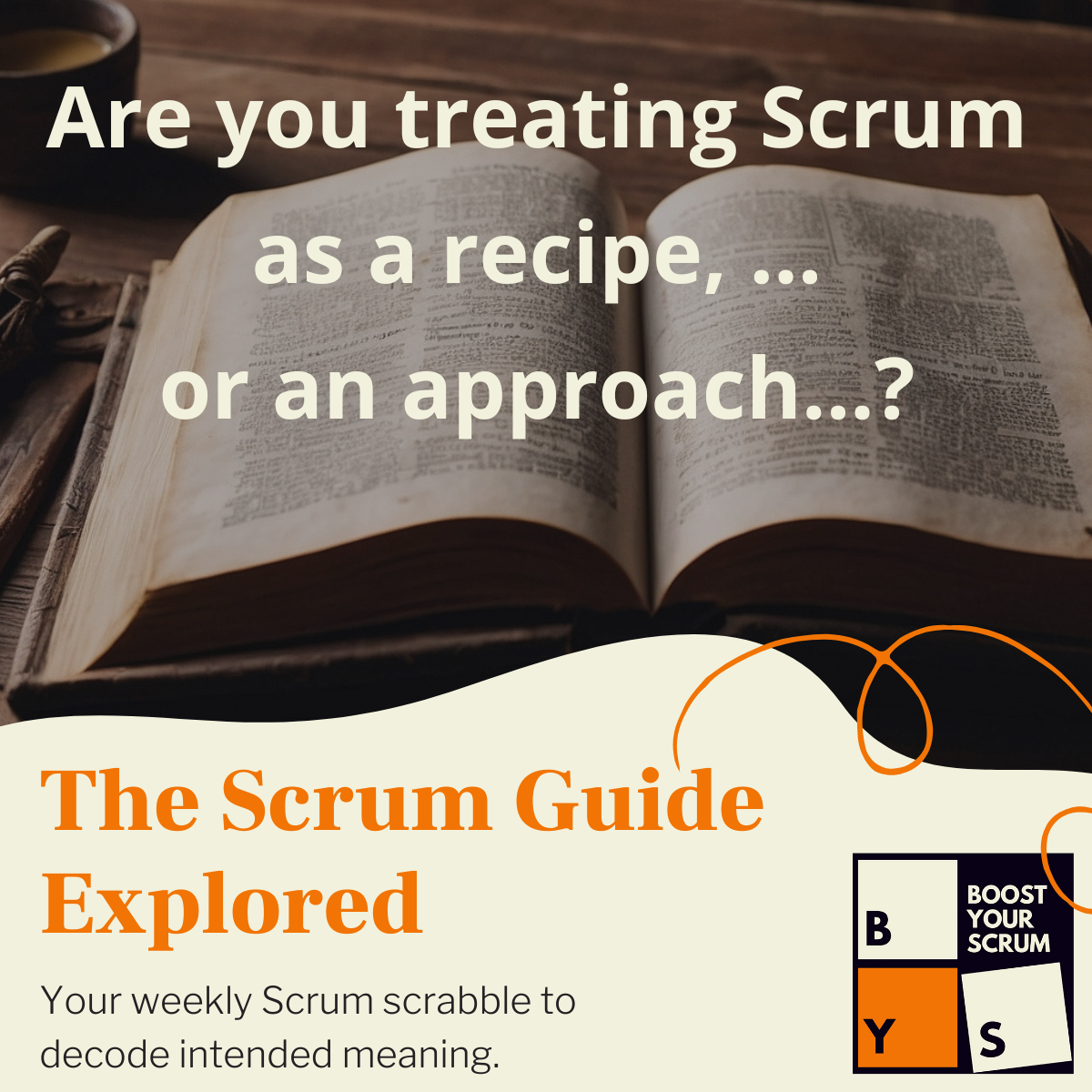Scrum is an approach—not a recipe.
From the Scrum Guide:
“Scrum employs an iterative, incremental approach to optimize predictability and to control risk.”
Cambridge Dictionary offers several definitions of “approach”:
- A way of considering or doing something
- A way of dealing with something
- A route that leads to a place
Scrum is all three.
It’s a way of considering work: not as simple or predictable, but as complex, where more is unknown than is known, where the problem is clear but the solution not so much, where cause and effect are only visible in hindsight.
For example: a team treats a missed Sprint Goal not as failure, but as evidence their assumptions were off. Instead of blame, they ask: what did we learn, and how do we adapt? Scrum reshapes how they consider work.
It’s a way of dealing with challenges: by using empiricism—transparency, inspection, and adaptation—instead of relying on assumptions or upfront certainty.
For example: a Product Owner faces conflicting stakeholder demands. Instead of negotiating and promising upfront, Scrum gives them a way of dealing with it: transparent focus, regular inspection, and reordering based on evidence.
And it’s a route that leads somewhere: toward teams that deliver solutions and improvements to users more predictably, toward risks being surfaced and controlled earlier, toward organizations learning faster than their competitors.
For example: a team delivers an improved version every Sprint. At first, it’s clunky and incomplete. Over time, their Definition of Done - i.e. their quality level - expands, automation improves, and quality rises. The “place” Scrum leads them to: predictable delivery of valuable increments.
Scrum doesn’t eliminate risk. It makes it visible.
It doesn’t guarantee predictability. It helps you optimize it.
But only if you treat it as an approach to navigate complexity—not as a checklist of ceremonies.
Too often, I see Scrum misused as something else:
- Daily Scrums run as status reports for managers—no inspection, no adaptation.
- Jira boards worshipped as the goal, rather than gathering evidence of value delivery.
- Teams spending months “refining” entire backlogs before starting—waterfall with Scrum stickers.
- Sprint Reviews polished to hide undone work—killing transparency instead of using it to improve the solution to what users really need.
So ask yourself:
- Is Scrum helping you make value delivery more predictable?
- Are risks actively surfaced and managed—or buried until it’s too late?
Are you walking the route Scrum lays out—or trying to bend it into a process it was never meant to be?
Scrum is an approach. Where is it taking you?
To what place is Scrum leading you?
I’d love to hear your thoughts in the comments below!
I hope you find value in these short articles and if you are looking for more clarifications, feel free to make contact.
Don't want to miss any of these blog posts? Have the “The Scrum Guide Explored” series weekly in your mailbox.
Wishing you an inspiring read and a wonderful journey.
Scrum on!

